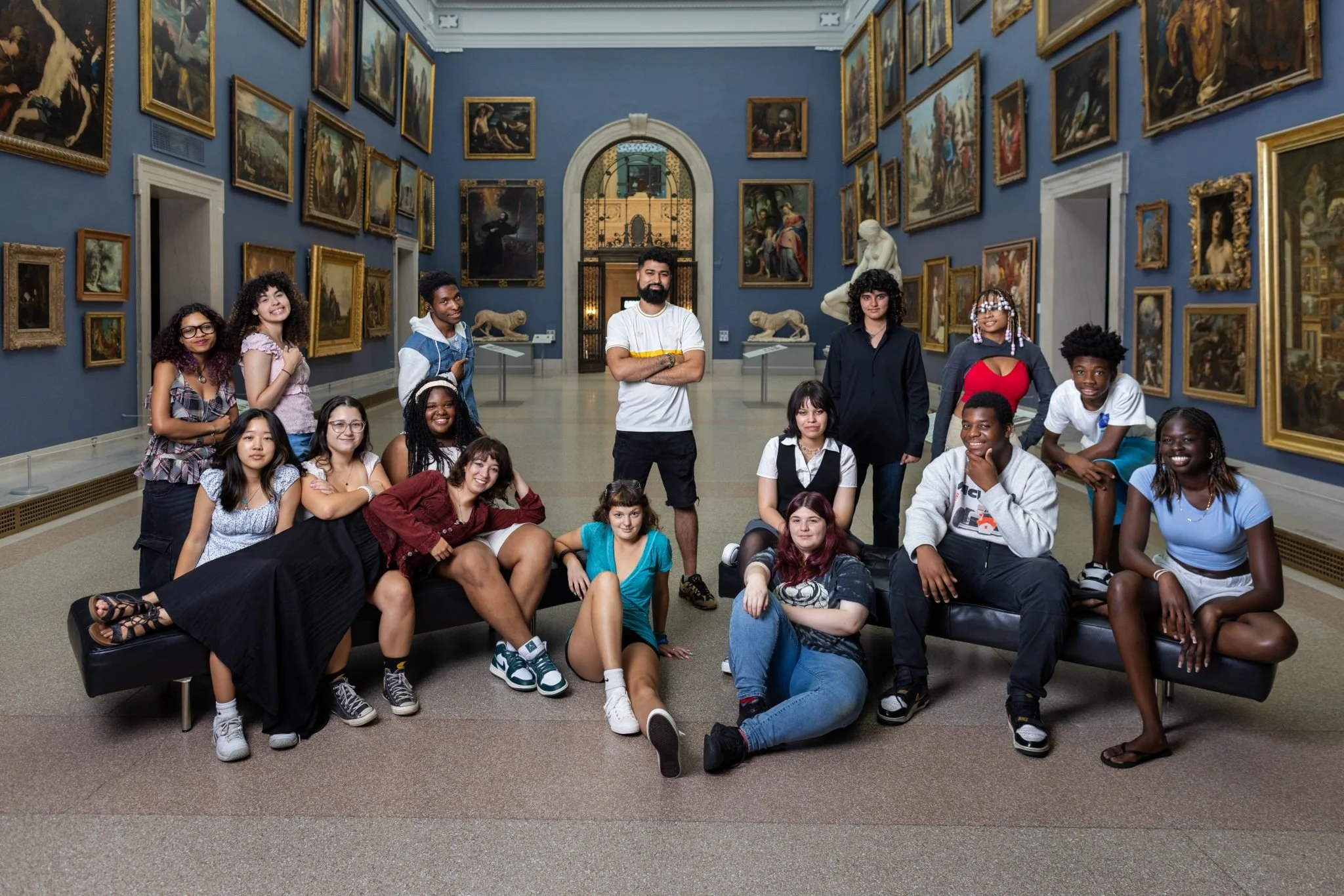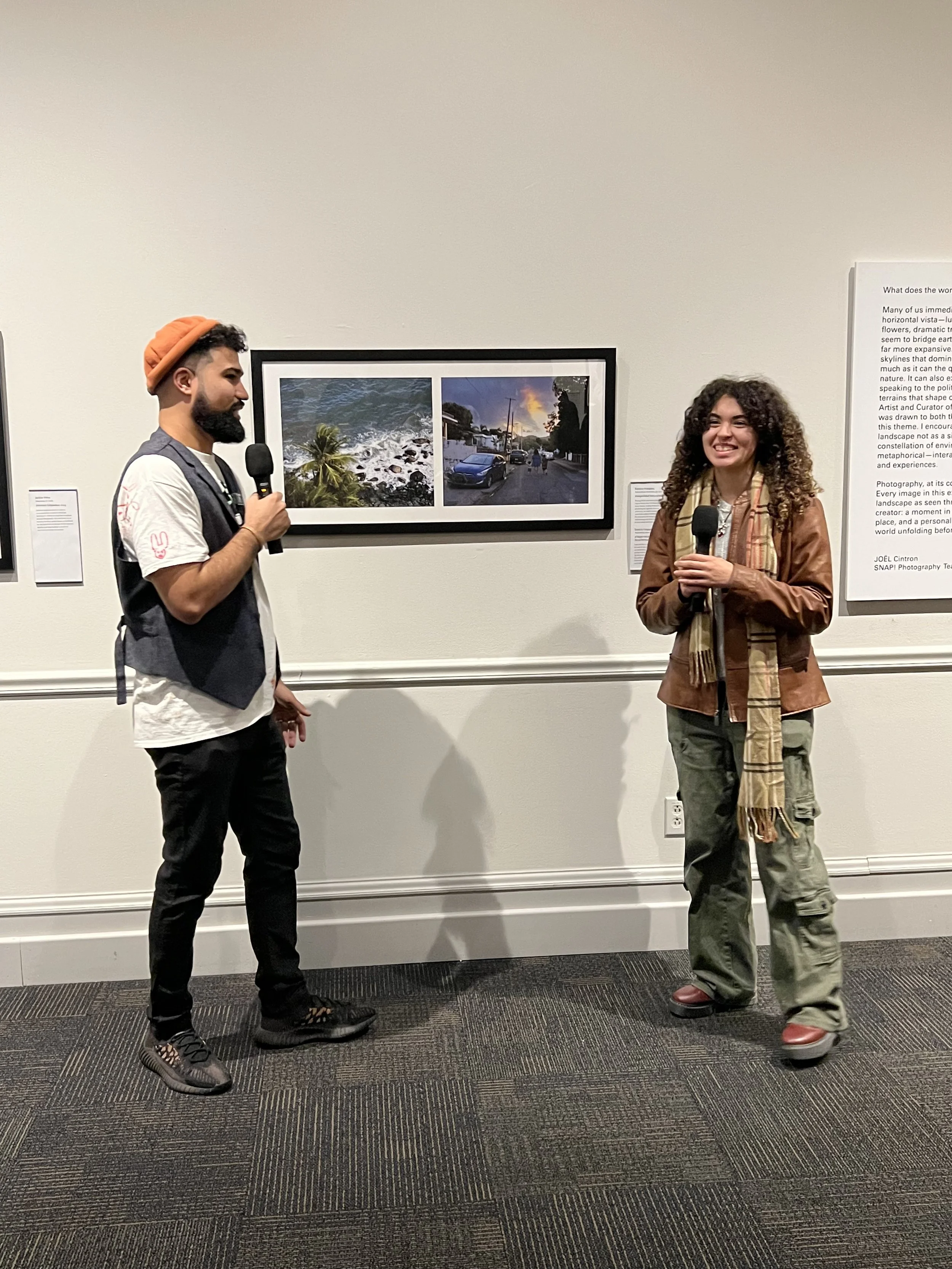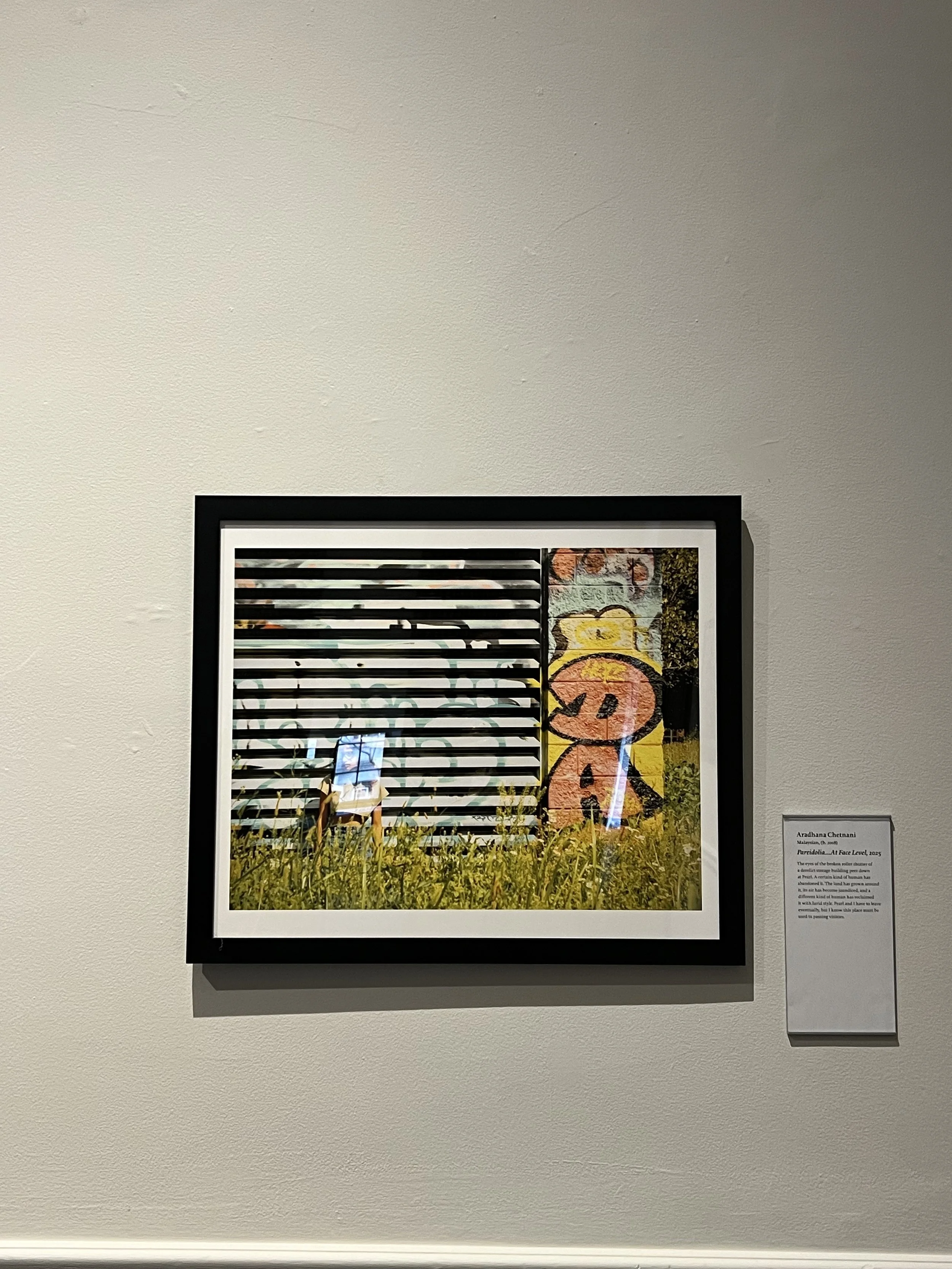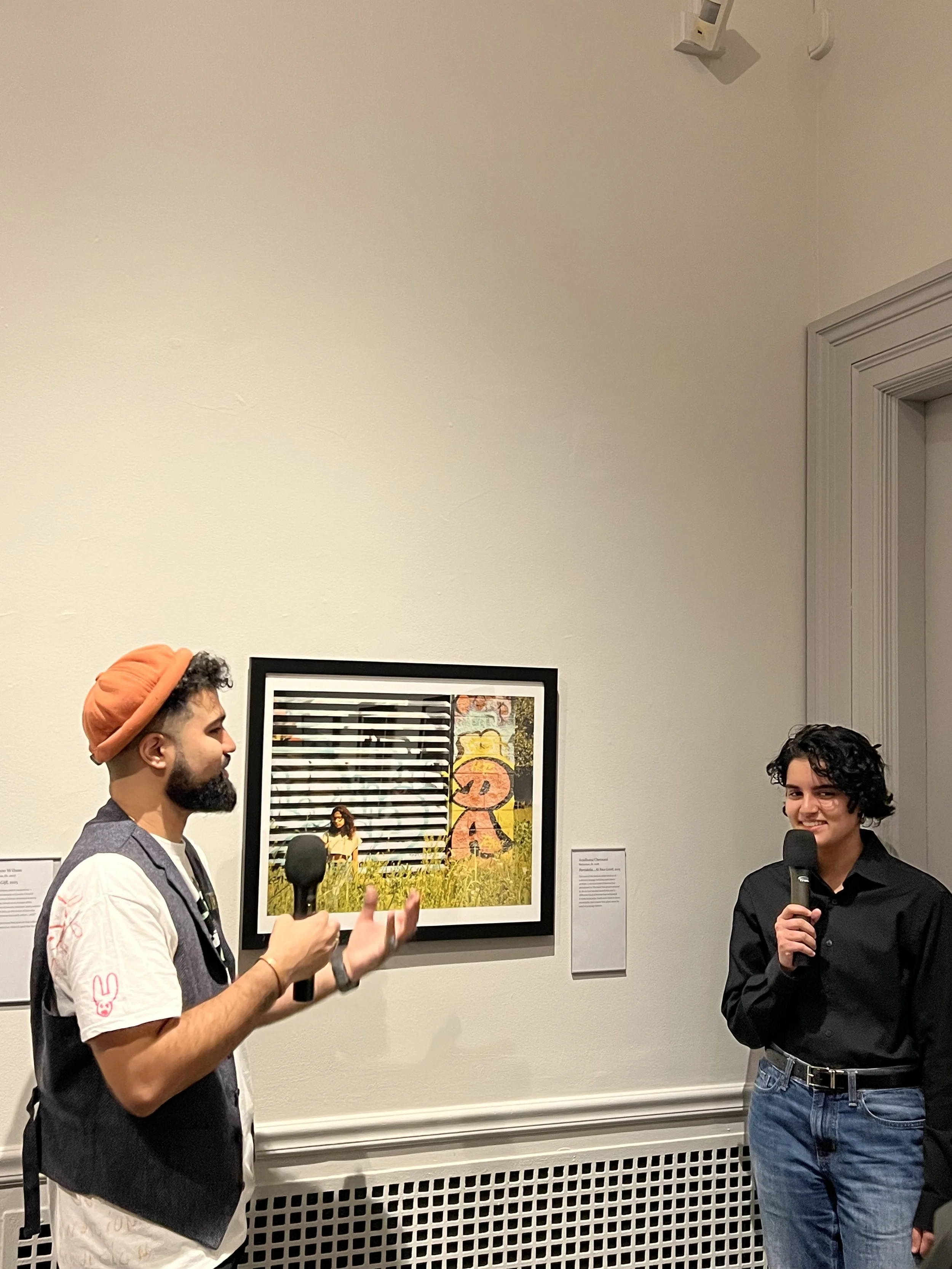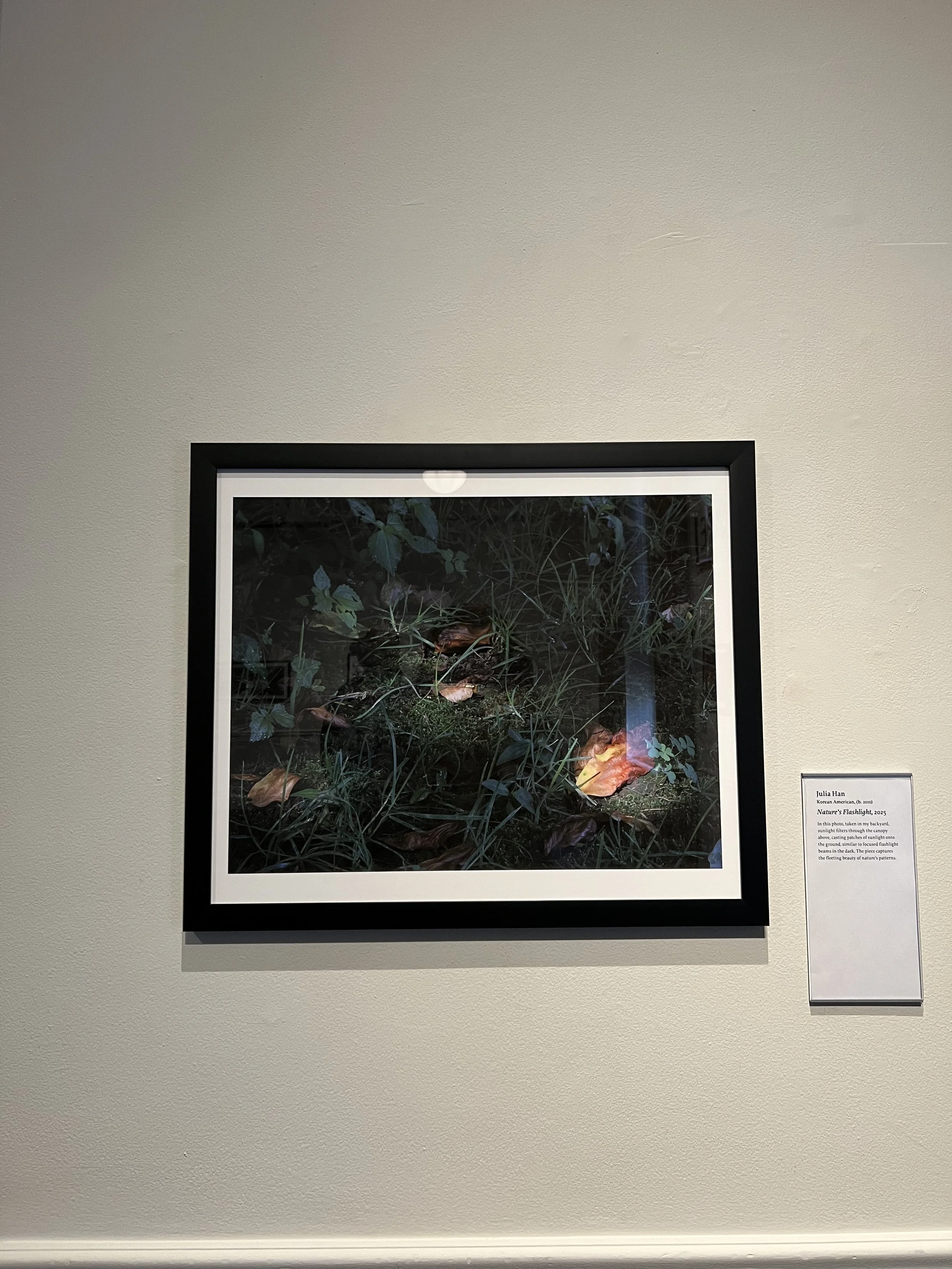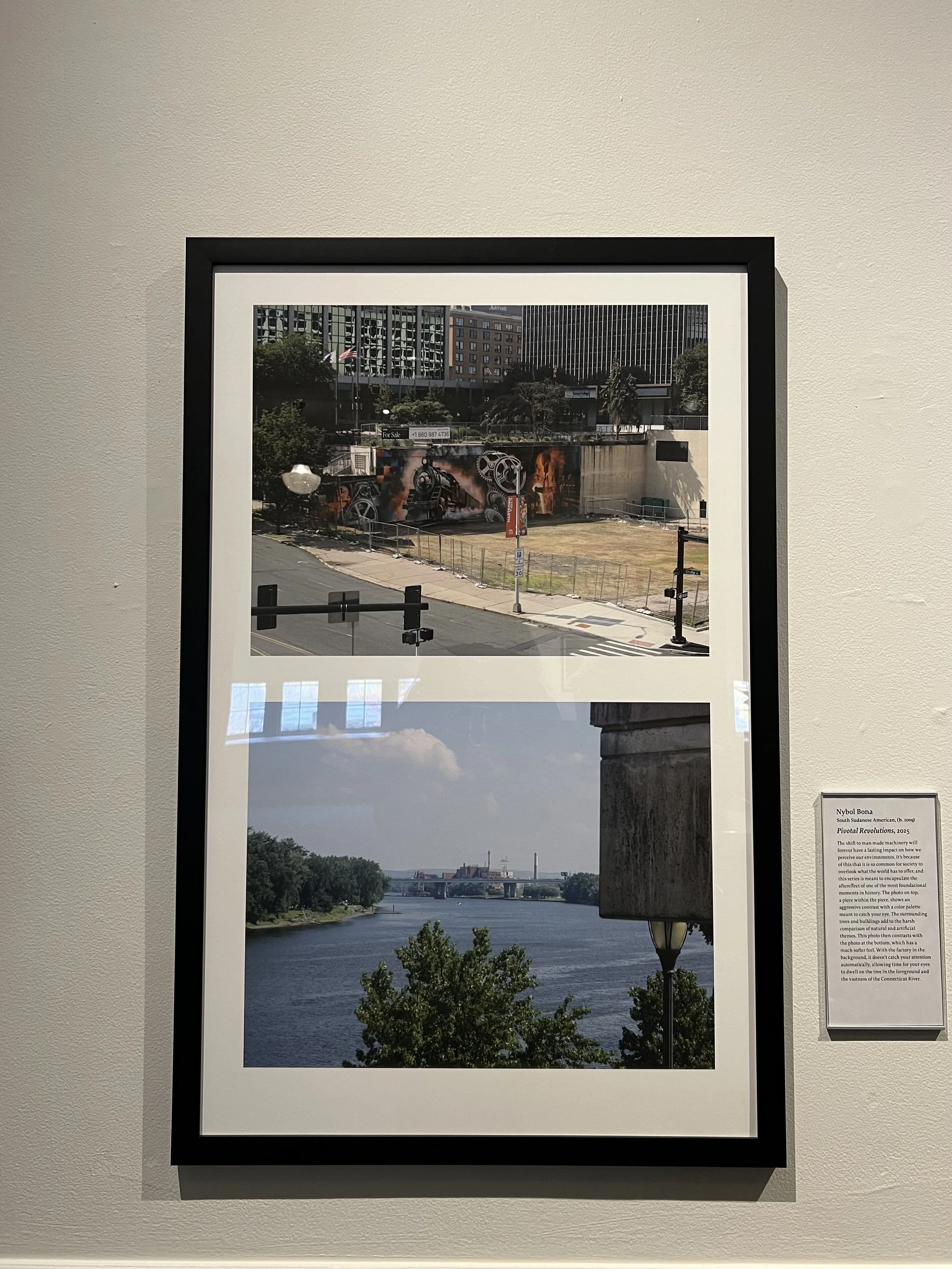THE AMISTAD CENTER FOR ART & CULTURE HELPS YOUNG ARTISTS FIND THEIR VOICE
WITH THE AID OF SNAP! PHOTOGRAPHY TEEN RESIDENCY
While you could argue that Gen Z is surrounded by cameras — Instagram, TikTok Live, Snapchat streaks — not many truly know how to operate the device. However, the Amistad Center for Art & Culture is helping the younger generation lock in with the aid of SNAP! Photography, an intensive artist residency for teens. Under the guidance of Associate Curator for the African Diaspora, Bethani Blake and Hartford-based photographer and professor of photography, Joel Cintron, the four-week program gives teens the opportunity to explore photography as an art form.
Motivated by the theme, “Land • SCAPE,” the 14 artists-in-residence went beyond the frame. “The openness and fluidity of the theme allowed the students to color outside of the lines of the normative notion of what landscape is. I wanted to give them the license to roam outside of the literal horizontal orientation and convey what landscape means to them,” Joel shares. In addition to an exhibition at the Wadsworth Atheneum, the young photographers also created their own zine, showcasing a wider breadth of their work and providing a peek into their personalities. “Art has always been how I process what I feel and who I am. I’m drawn to themes of identity, mental health, love and resistance I’m big on doing things myself, learning as I go and staying true to my voice,” student Pearl shares.
From musings on personal identity to reflecting on our socio-political landscape, the budding young artists used their newfound photography skills to visually convey their perspectives and point of view. Rising UCONN freshman Raven Bell married her passion for political science and photography to create the program’s title image, Disconnecting. “The piece reflects on what it looks like to disconnect when we live in a modern age that is constantly bombarded with technology. Oftentimes, we resort back into nature to ground and balance ourselves. However, we also see influencers who are constantly documenting the experience. So the question itself is are we actually disconnecting from society while trying to share our experience with others or are we detracting from that experience by documenting it? For some, documenting is a distraction, but for me, it’s a way of showing the beauty of Connecticut despite the socio-economic disparities.”
While the world has been made a mess of by adults, it’s safe to say the kids will be alright.
Continue scrolling to hear more from teaching artist Joel Cintron and view the students’ body of work.
Cafeteria: What was the inspiration behind this year’s theme?
Joel Cintron: Bethani Blake initially created the theme, while I reinforced the fact that the students didn’t have to interpret landscape literally. Their photographs didn’t have to be landscape orientation or a depiction of nature. I wanted to give them the license to roam outside of the literal horizontal orientation. Usually, landscape translates to mountains, trees and foliage, but we wanted to explore what landscape means to each individual student, whether that was the cultural or political terrain. The theme is open to interpretation and that’s even reflected in the exhibition’s logo with the mixed capitalization, which plays on its ambiguity. That openness allowed the students to color outside of the lines of the normative notions of what landscape means.
What was it like working with the students and watching their growth?
JC: It’s one of the greatest joys of teaching. One of my first jobs outside of college was working with inner city youth from the North End of Hartford with Hartford Communities That Care, so I’ve always been connected to teaching. The beauty of teaching an artistic medium such as photography is the privilege of seeing each student’s perspective, talent and growth. A lot of the students don’t arrive with a background in photography and are initially focused on other mediums, such as drawing, music or writing, so I think it’s amazing to see them grow to appreciate photography and gravitate towards it more. Nowadays, people usually don’t have cameras, they just have smart phones. It’s such a different experience when you actually have a camera and have the chance to get to know the different elements, like the view finder and the shutter speed. You can tell a better story with a real camera and the students’ growth as storytellers is apparent in the tombstone descriptions because they are in the photographers’ own words. It gives them a way to provide context for their work, articulate their vision and convey what it means to them. Seeing them come alive and continue to pursue photography beyond the SNAP! program is incredibly gratifying. Every time I teach, I find myself learning more about my craft and the world around me from the students.
These days, it seems like teens are being forced to grow up a lot faster and a lot of that is due to social media. Can you speak to the importance of teens and young adults having a creative outlet in an increasingly digital and sometimes dangerous world?
JC: Photography forces you to go out and take pictures, so you have to connect with the world around you. Now, you have an iPad and you can create digital art. Photography, by its very nature, pushes you to capture real moments in real time. During the program, we went on excursions around Hartford to help the students get comfortable going out and capturing life as it happens. With social media, there is an over abundance of triggering content, everything is at their fingertips, so it’s refreshing for them to take a break and see the world from a different point of view. Photography encourages you to go outside, especially if you want a change in scenery and subject matter. It helps you connect with the real world. The point of doing programs like this is to get young adults out of that all consuming content cycle. Over the summer, the students have the opportunity to lock in and focus on their art.
Why are programs like SNAP! Photography Residency necessary for encouraging and nurturing the future generations of creatives?
JC: It’s a great way for the younger generations to find different mediums to tell stories and connect through art. It’s an intensive focus for 4 hours a day, 4 days a week for an entire month. They can add their photography to their portfolio or share it on social media to provide extra context to their perspective. Programs like SNAP! Photography definitely help teens with self-expression and encourages them to use their voice.


